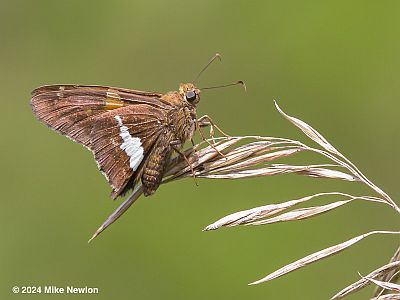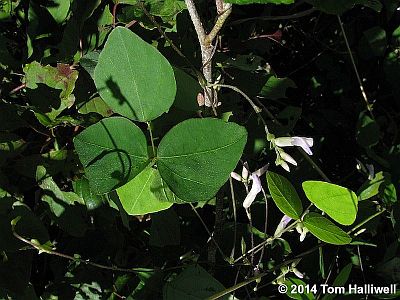New Jersey Butterfly Club
A chapter of the North American Butterfly Association (NABA)
Silver-spotted Skipper
Epargyreus clarus
Identification: Small—1.9” (but our largest spreadwing skipper). Above: FW and HW dark brown, with a band of large, squarish, golden spots across the mid-FW. Below: FW and HW dark brown (with violet frosting along wing margins when fresh), with a large, brilliantly white splotch across middle of HW. Part of translucent golden band on FW is usually visible.
NJ Status and Distribution: Resident. Common and widespread throughout.

Habitat: Dry to moist fields, wet meadows, and wood edges. Easily attracted to gardens with flowers such as Butterfly Bush, milkweeds, and Purple Coneflower.
Flight Period: Two to three broods, that result in a fairly even distribution from mid-April to mid-October without obvious peaks. Extreme dates: North Jersey 4/14—10/28; South Jersey 3/19—11/2.
Caterpillar Food Plants: Primarily Black Locust (Robinia pseudoacacia), but also many other legumes, such as tick-trefoils (Desmodium). Caterpillars bind leaves together to form shelters.
Overwintering Stage: Pupa.
Good Locations: Just about anywhere near the host plants.
Comments: This is one of most familiar butterflies of NJ fields and gardens. The large white spot on the underside of the hindwing appears to glow and can be seen even while this energetic butterfly zooms around.

Fredon Twp., Sussex Co., NJ, 6/27/11.

White Lake Natural Area, Hardwick Twp., Warren Co., 8/27/16.

Egg on American Hogpeanut (Amphicarpaea bracteata).

Late instar caterpillar wrapped in leaflet of Black Locust.

Prepupal caterpillar.

Leaves of the legume Black Locust, one of the primary caterpillar food plants for Silver-spotted Skipper.

Another view of the caterpillar food plant American Hogpeanut.

American Wisteria (Wisteria frutescens), a garden-worthy North American native caterpillar food plant that is readily used by Silver-spotted Skipper.